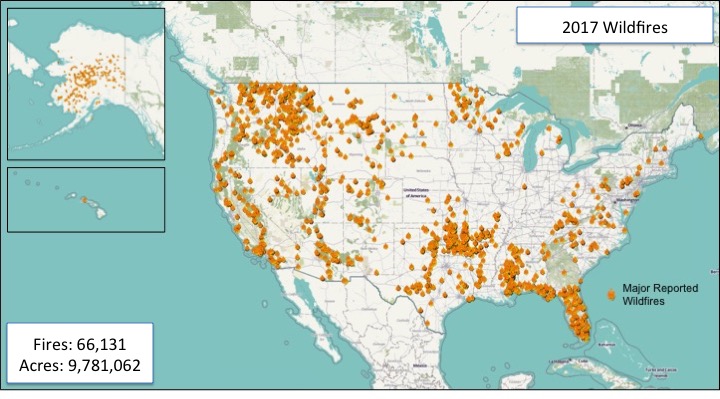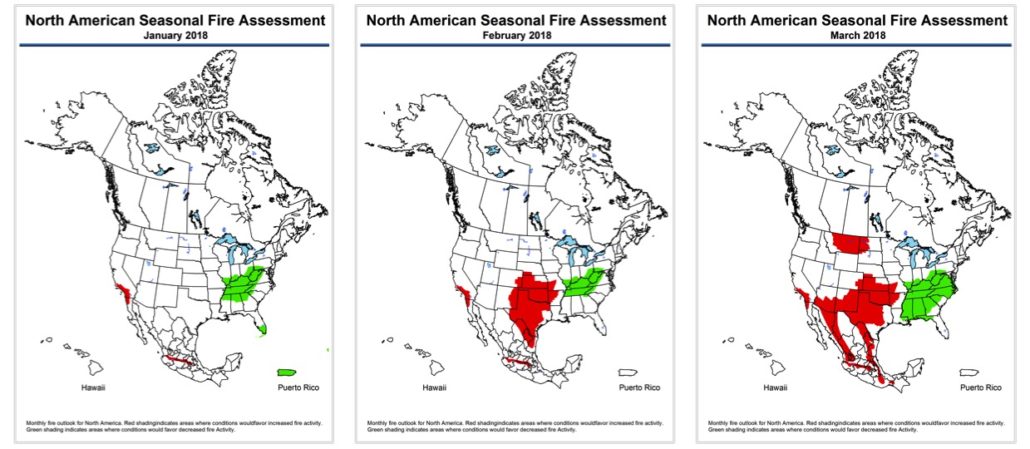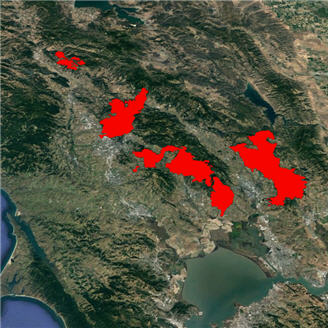Fire Season in 2017 was yet another headline-filling wildfires across the US and North America. Data reported by the National Interagency Fire Center (NIFC) for the 2017 calendar year showed 66,131 total fires (+3,277 from 2016) and 9,781,062 (+4,365,941 from 2016) acres burned across the fifty states. In recent blog posts, we highlighted the two major wildfire events, which were the pinnacle of this fire season in terms of destruction and acreage burned. October’s Northern California Wildfires included the Tubbs Fire that burned the most structures (5,000+) in recorded history and the equally significant Thomas Fire (in Ventura/Santa Barbara) that burned the most acres in California history, in December!

Major Fires from Fire Season 2017 reported by GEOMAC and NIFC
A Look Back at 2017 Fire Danger
Like most years, 2017 saw high fire danger transition across the country, coinciding with regional climate and conditions. High fire danger started in the Midwest and South in March and April, crept into the Southwest in May and June, moved into the Mountainous West and California by July, before finishing with the Southern Appalachians towards the end of the year. The nearly 10 million acres was the second most since NIFC began recording totals across the country. 2017 ranked higher in number of acres burned compared to the 10-year average.
2018 Early Fire Season Outlook
January:
La Niña conditions are likely to continue drying the southern third of the U.S., although occasional storms will bring some helpful moisture. Nonetheless, an elevated threat of large fires along the southern California coast will continue. Dry conditions in the Southwest and southern Plains will worsen but conditions in January are not likely to support much fire activity.
Feb/March:
Drying continues across the southern third of the U.S. Transition to early spring across the southern Plains will bring increasing wind events that could spread fire quickly across the dry grasslands of the southern Plains and the Southwest. The increased potential will spread across Texas, New Mexico, Oklahoma, eastern Colorado, southern Kansas, western Arkansas and Missouri, and southern Arizona by March. Increasing potential for dry, windy fronts in the northern Plains and poor snow cover could contribute to elevated risk of large fires across eastern Montana and western North Dakota in March. Persistent dryness and potential for offshore winds will keep an elevated threat in coastal southern California.

An early look at the Fire Danger in the first three months of 2018
Sources: NIFC, GEOMAC, Predictive Services





2 Comments